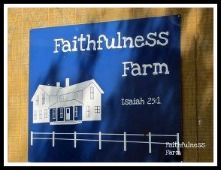
Braised Short Ribs
This week I ran into Hy-Vee on my way out of town and then home for the day. I only needed to pick up a prescription and since I’m working my way through my freezer and pantry inventories, a small amount of produce. It was after 5 and HyVee was busy and the line at the checkout counter was long. I decided to entertain myself with a new (to me) magazine, Fine Cooking. I flipped open and turned directly to the article on page 36 – Braised Short Ribs. Both last week and this, my dear friend Yvonne at StoneGable has mentioned Braised Short Ribs on her blog. I love Braised Short Ribs. I wanted them last week but resisted because I have none in my freezer……I really had planned to resist buying them this week too. All resistance flew out the door right there in the checkout line. I left my place and headed straight for the meat counter where I picked out a family sized package of short ribs.
I want to state that I am not sure what rock I have been hiding under but I love Fine Cooking Magazine. I am not really sure why I’ve never noticed this magazine before now but am happy to have found it and wasted no time sending in my subscription card. Their website is very extensive with a large variety of recipes. If you are not a magazine addict like me, you could be very satisfied with just the webpage experience.
Now back to Braised Short Ribs. Fine Cooking magazine has this Create Your Own Recipe feature (I’ve linked to it). You make a few choices (Braising liquids, Flavorings, Aromatics, Deglazing liquids, Finishes, Garnishes) and the site builds YOUR recipe. How cool is that?
Create Your Own Recipe - Braised Short Ribs
So here is the recipe I created (based on the choices I made). I served with a creamy, cheesy polenta and roasted cauliflower. A very, very yummy supper!
Braised Short Ribs
(Printable Version)
4-1/2 to 5 lb. English-style beef short ribs (8 to 12 ribs)
3 Tbs. vegetable oil
Kosher salt
ground black pepper
2/3 cup medium-diced onions
2/3 cup medium-diced carrots
2/3 cup medium-diced celery
1 Tbs. finely chopped garlic
1 Tbs. chopped fresh thyme
2 whole dried bay leaves
1/2 cup dry red wine
1-1/2 cup diluted lower-salt beef broth (mix equal parts broth and water)
1-1/2 cup dry red wine
1 to 2 tsp. balsamic vinegar
1 to 2 Tbs. chopped fresh parsley
Position a rack in the center of the oven and heat the oven to 325°F. In an 8-quart Dutch oven, heat 2 Tbs. of the oil over medium heat. Season the ribs with 2 tsp. salt and 1 tsp. pepper. Add half of the ribs to the pot (or as many as will fit without overlap), and cook, turning with tongs, until nicely browned on all sides, 3 to 4 minutes per side. Transfer the ribs to a platter and repeat with the remaining ribs. Pour off all but a thin layer of fat from the pan.
Add the remaining 1 Tbs. oil, onions, carrots, and celery to the pan. Season with 1/2 tsp. salt. Cook, stirring and scraping up any browned bits on the bottom of the pan, until the aromatics are soft and lightly browned, 6 to 8 minutes. Add garlic, thyme, and bay leaves, and cook, stirring, until well distributed and fragrant, about 1 minute.
Pour the 1/2 cup red wine into the pot and cook, stirring to scrape up any browned bits on the bottom of the pot, until the liquid is reduced to about 2 Tbs., about 1 minute.
Transfer all the ribs (and any juices that have accumulated) back into the pot. Pour the beef broth and red wine and 1 cup water over the ribs and using tongs, arrange the ribs as evenly as possible and no more than two layers deep.
Bring the liquid to a simmer, cover, and put the pot in the oven. Cook, turning the ribs with tongs about every 40 minutes, until they are fork tender, about 2-3/4 hours. (The meat may fall off most of the bones about midway through cooking; this does not mean that the ribs are fully tender.)
Transfer the ribs to a serving platter or dish. Let the sauce and solids sit in the pot for a few minutes to cool and with a shallow spoon, skim off as much of the fat as possible from the surface. Season the sauce to taste with salt and pepper, and add the vinegar.
Serve the ribs with the sauce spooned over, sprinkled with chopped parsley. Serves 6.
Hooking up with Michael's Foodie Friday at Designs by Gollum! I look forward to this foodie event all week!






























































